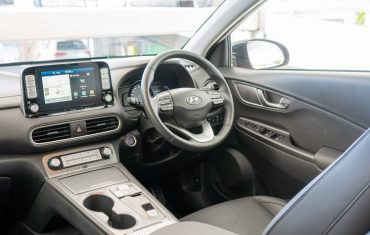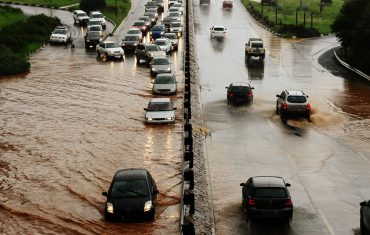
Keeping your cool: How to stay safe on the roads this winter
For driversWhen the weather turns cold in Australia, it brings with it a wide range of challenges on the roads.
Whether you’re covering long distances in rural Australia or negotiating efficient movement from one side of the city to the other, the changing of the seasons necessitates a change of behaviour behind the wheel – not to mention making sure your car is in tip-top shape.
We run through some of the unique driving conditions that can befall Australian roads in winter and the behaviour you need to adopt.
Conditions
Black ice
Black ice is a thin sheet of ice that can form over a road in extremely cold weather, usually occurring around dawn or late evening. It is almost impossible to spot given how thin the layer of ice can be, and its blending into the asphalt road surface.
Although most commonly found in rural areas, black ice doesn’t discriminate and has been known to form in metro cities as well. It generally forms in shady areas – on roads and on bridges – when there are clear skies with the temperature sitting around zero degree Celsius or when the ground temperature is cooler than the air temperature.
If you find yourself driving on black ice, the first thing to do is keep calm. Reduce speed by taking your foot off the throttle completely and do not hit the brakes. The slower you’re travelling, the less the chance of being seriously injured if your vehicle leaves the road, and the more chance you have of maintaining some kind of control over the car.
Make sure there’s a decent gap between you and the vehicle ahead. There’s no hard and fast rule on the minimum gap you should leave but the further between you and the car ahead the better.
Floods
Another life-threatening road condition that Australians commonly face is flooded roads. If a road you need to use is flooded – whether it’s in a major city, on a freeway or a country road – do not try to drive through the water. Even if you see other vehicles making it through, do not follow suit.
Different cars react differently when large amounts of water hit the floor pan of a car, and research shows that even the smallest of currents have the potential to wash vehicles away. The same UNSW research found that even a water depth of only 15 centimetres could be potentially dangerous for some vehicles.
Driving through floodwaters puts not just your life at risk, but also the lives of the emergency services people who’ll be called to come and rescue you.
Behaviour
Take your time, stay calm
Things can, and will, go wrong on our roads in winter. It is as inevitable as death and taxes. Losing your cool and driving in an aggressive manner on a greasy or wet road will almost guarantee you’re likely to experience – or cause – an incident yourself.
Where it’s possible, allow yourself extra time to get from point A to point B. Arriving 10 or 15 minutes earlier to a client meeting is surely a better proposition than arriving an hour late, stressed-out and unprepared because you were stuck in traffic, or worse, involved in an at-fault accident en-route.
Be informed
The majority of state road authorities provide a wealth of easy-to-access, real-time updates on road conditions and closures in your area.
Take the time to find out what’s happening on the roads you’re going to be using by visiting state road authority websites, signing up for email or SMS alerts, downloading their smartphone apps or checking their social media accounts for the latest information. Then plan your drive accordingly. It’s an easy way to avoid stress and make it to your destination with as few headaches as possible.
Drive to the conditions
Advances in vehicle safety and driver assistance technology mean that our vehicles are far safer than they were in previous eras. It’s still essential, though, to alter the way you drive on wet or greasy roads.
Leave longer braking distances, stay under the posted speed limit and take corners at a reduced speed. Even the most advanced driver technology in the world won’t be able to save you if you’re speeding or driving erratically on a wet road.
Mechanical
If you’re using a vehicle for business, it’s also your workplace and you have a responsibility to make sure it’s as safe as possible. Most scheduled servicing programs take the change of seasons into account but it can pay to draw attention to the following items at your next service.
- Ensure your wiper blades are in good condition; and
- Check your tyres are inflated to manufacturers’ specifications – under-inflated tyres can lead to aquaplaning, as well as negatively impact your vehicle’s overall performance, handling and fuel efficiency.
Using your vehicle’s air conditioner in conjunction with your heater is a safe way to de-humidify the interior of your vehicle and avoid fogged-up windows. Consequently, it’s equally worthwhile having the heating and cooling system checked at its winter service interval.
And never use warm water to get ice off your windscreen on a chilly morning – the temperature extremes could shatter the glass.
Start a conversation with SG Fleet today.
 Driving Insights
Driving Insights




